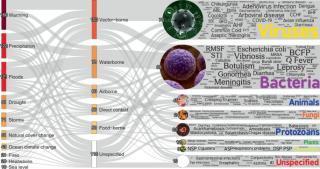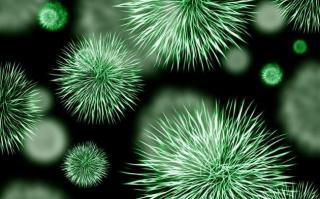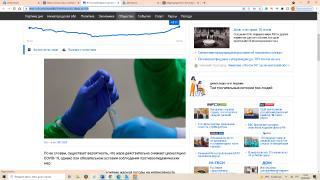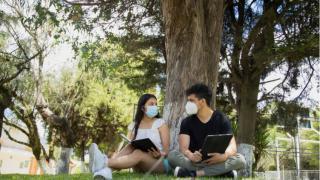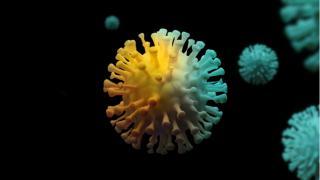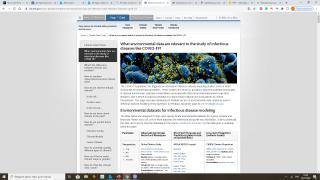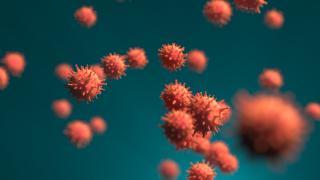Условия распространения COVID-19
-
2022-09-09 12:41:28
It is relatively well accepted that climate change can affect human pathogenic diseases; however, the full extent of this risk remains poorly quantified. Here we carried out a systematic search for empirical examples about the impacts of ten climatic hazards sensitive to greenhouse gas (GHG) emissions on each known human pathogenic disease. We found that 58% (that is, 218 out of 375) of infectious diseases confronted by humanity worldwide have been at some point aggravated by climatic hazards; 16% were at times diminished. Empirical cases revealed 1,006 unique pathways in which climatic hazards, via different transmission types, led to pathogenic diseases. The human pathogenic diseases and transmission pathways aggravated by climatic hazards are too numerous for comprehensive societal adaptations, highlighting the urgent need to work at the source of the problem: reducing GHG emissions.
-
2022-09-09 12:37:33
Прогрессирующее глобальное потепление является источником многих новых проблем для человечества. Одним из них является повышенный риск возникновения специфических заболеваний в местах, где их раньше не было. Однако дело обстоит намного сложнее.
-
2022-08-17 14:28:06
Ученые продемонстрировали, как пероксид спонтанно образуется в микрокаплях воды: летом, когда воздух влажный, этот механизм может нейтрализовать часть вирусов, прежде чем они кого-нибудь инфицируют.
-
2022-05-31 06:33:08
В исследовании, опубликованном в журнале Proceedings of the National Academy of Sciences, выяснили, что капли слюны, которые вылетают изо рта при громкой речи, висят в воздухе еще в течение 8-14 минут. За каждую секунду речи человек создает в среднем две с половиной тысячи капель диаметром 10-20 микрометров. С учетом средней вирусной нагрузки при COVID-19 около 40 процентов этих капель содержат вирусные частицы и могут заражать окружающих больного людей.
-
2022-01-18 05:58:15
Коронавирус теряет 90% своей способности заражать в течение 20 минут после нахождения в воздухе. При этом большая часть потерь происходит в течение первых пяти минут. Таким образом, наиболее уязвимыми для заражения оказываются люди, находящиеся в непосредственной близости от больного COVID-19.
-
2021-10-22 18:31:25
В то время как большинство москвичей не только перестали надевать маски на улице, но и поголовно пренебрегают их использованием в метро и магазинах, исследования эпидемиологов и инфекционистов относительно путей передачи нового коронавируса далеки от оптимизма. Некоторое время назад ВОЗ даже заявила, что «нельзя исключить» передачу COVID-19 через аэрозоли. Но что это значит? Сайт СПИД.ЦЕНТР предлагает вам сокращенный перевод статьи Брайана Резника, написанной им для американского сайта VOX. И призванной ответить на пару простых, но все еще актуальных вопросов: стоит ли все-таки носить в помещении маски и каких контактов стоит опасаться, даже несмотря на «спад» мировой пандемии?
-
2021-10-22 18:31:25
"Какой способ передачи SARS-CoV-2 стоит на первом месте? Спустя полтора года после появления вируса знания по этому вопросу остаются неполными. В конце июля группа американских ученых из Национального института здравоохранения в предварительной публикации подтвердила то, что Covid-19 хорошо передается через выдыхаемый воздух на большие расстояния, то есть более 2 метров (так называемый воздушно-пылевой или аэрозольный путь). Именно так золотистых хомячков заразили их сородичи, находившиеся в другой клетке на расстоянии 2 метров от первой. Кроме того, было проверено, что капельки размером более 5 микрон не переходили от одной группы к другой", - пишет журналист Le Monde Давид Ларуссери.
-
2021-09-19 08:08:07
Мутировавший коронавирус лучше переносится по воздуху, выяснили ученые из Университета Мэриленда в США. По их данным, при альфа-варианте SARS-CoV-2 количество вирусной РНК в выдыхаемом воздухе увеличивается по сравнению с более ранними штаммами. Исследование опубликовано в Clinical Infectious Diseases.
-
2021-06-26 07:32:51
Для того, чтобы оценить влияние жары на снижение интенсивности циркуляции коронавирусной инфекции, пока не достаточно данных, однако есть вероятность, что между этими факторами существует взаимосвязь. Об этом ТАСС сообщила заместитель директора по клинико-аналитической работе ЦНИИ эпидемиологии Роспотребнадзора Наталья Пшеничная.
-
2021-06-25 19:53:19
Исследователи из Университета Никосии на Кипре заявили, что пыльца деревьев может переносить сотни вирусных частиц и увеличить риск заражения в людных местах.
-
2021-06-24 12:06:49
Американские химики смоделировали распределение воздушных потоков при игре духового оркестра в двух концертных залах штата Юта. В большом зале с современной системой кондиционирования снизить в тысячу раз концентрацию аэрозольных частиц помогла оптимальная рассадка музыкантов и открытые боковые двери, однако в малом зале с устаревшей системой кондиционирования открытых дверей оказалось недостаточно — требуются дополнительные воздуховодные каналы. Статья опубликована в журнале Science Advances.
-
2021-05-17 11:13:03
Исследование, проведенное в Белизе и Тайване, показало, что четыре основных белка вируса SARS-CoV-2 проявляют крайнюю термостабильность. Это означает, что температурные изменения между зимними и летними месяцами не оказывают значительного влияния на распространение вируса, зато эти белки могут использоваться
Статья пока не прошла рецензирование и опубликована на сервере препринтов bioRxiv, коротко о ней рассказывает News-Medical.как мишени для лекарств. -
2021-05-13 13:50:11
Уровень заболеваемости коронавирусной инфекцией в России в ближайшее время будет зависеть от погоды, сообщили «РИА Новости» со ссылкой на профессора Школы системной биологии Университета Джорджа Мейсона Анчу Баранову.
-
2021-04-26 11:57:52
Правило «шести футов» или социальное дистанцирование на 1,5-2 метра, используемое по всему миру в качестве ключевой меры профилактики инфицирования COVID-19, в том числе в помещениях, не минимизирует вероятность заражения. Исследователи из Массачусетского технологического института утверждают, что риски инфицирования при нахождении в одном помещении с заболевшим равны как на расстоянии двух, так и двадцати метров, пишет CNBC. Ключевой фактор вероятности заражения в этом случае только один — время проведенное в одном помещении с зараженным.
-
2020-10-14 11:32:54
Японский суперкомпьютер рассчитал, как влажность воздуха влияет на распространение вирусных частиц. О результатах сообщает Reuters.
-
2020-10-14 02:21:35
Группа ученых из Принстонского экологического института, Калифорнийского университета в Беркли и университета Джонса Хопкинса пришла к выводу, что главными разносчиками коронавируса являются дети и молодые люди. Результаты исследования опубликовал журнал Science.
-
2020-10-12 15:39:40
Профессор Кларксонского университета США Суреш Дханияла на основании исследований аэрозолей рассказал, какое место лучше всего занимать в закрытом помещении, чтобы минимизировать риск заражения COVID-19. Его выводы опубликованы в Sсience Alert.
-
2020-07-26 07:38:05
The COVID-19 pandemic has triggered an increase in infectious disease modeling studies, some of which incorporate environmental parameters. These studies are driven by questions about the potential seasonality of disease transmission, potential comorbidities associated with other environmentally-linked respiratory diseases, and a desire to improve predictions to inform future national and local policies to control transmission. This page has been developed to facilitate access to environmental data commonly used in infectious disease modeling.
-
2020-07-26 07:37:58
Текущие события будут уделять больше внимания возможностям проектирования туалетов и других жилых помещений таким образом, чтобы уменьшить поверхностные контакты. Чувствительные к движению выключатели света, двери, которые открываются наружу на выходе, самоочищающиеся туалеты, мойки с педальным управлением и сенсорные сушилки для рук - все это варианты, которые предлагают способы сделать искусственную среду более сильным союзником в снижении заболеваемости.
-
-
2020-07-26 07:37:40
At the end of 2019, a novel coronavirus, designated as SARS-CoV-2, emerged in Wuhan, China and was identified as the causal pathogen of COVID-19. The epidemic scale of COVID-19 has increased dramatically, with confirmed cases increasing across China and globally. Understanding the potential affecting factors involved in COVID-19 transmission will be of great significance in containing the spread of the epidemic. Environmental and meteorological factors might impact the occurrence of COVID-19, as these have been linked to various diseases, including severe acute respiratory syndrome (SARS) and Middle East respiratory syndrome (MERS), whose causative pathogens belong to the same virus family as SARS-CoV-2.
-
2020-07-26 07:37:38
The environment is an integral component of human and animal health. COVID-19 is a global health challenge in the twenty-first century. The emergence of SARS-CoV-2 in Wuhan, China in December 2019, and its spread to regional countries and nowadays affecting more than 210 countries worldwide represents the first pandemic in history to be caused by a coronavirus. The COVID-19 pandemic has huge impacts on most aspects of human activities, as well as on the economy and health care systems. Lock-downs, quarantines and border closures in the wake of the pandemic have led to reductions in air pollution through decreased travel and production. These positive environmental effects are likely mostly temporary, but may serve as an example that changes in our way of life can have prompt positive effects for the environment and demonstrate the usefulness of travel-reducing measures such as teleconferencing. Thus, acknowledging that COVID-19 is first and foremost a global disaster, the pandemic may inspire to future behavioral changes with positive environmental effects.
-
2020-07-26 07:37:34
We are confronted with it several times a day by different media. COVID-19, better known as the Corona virus, is spreading rapidly around the world and is having an increasing impact on our daily lives. Although this is not s direct cause for concern, it is good to take certain things into account in order to minimize the risk of infection..
In addition to considering our personal hygiene and keeping utensils clean, good air humidity can help reduce further spread. “The COVID-19 virus can only withstand heat and humidity”, according to an infection expert from the RIVM¹. -
2020-07-26 07:34:36
A hotter planet could change the relationship among infectious agents, their hosts and the human body’s defense mechanisms
-
2020-07-26 07:27:10
The pandemic of “Corona Virus Disease 2019” or COVID-19 has taken the world by storm. Majority of nations of the world have been challenged by the novel coronavirus, which is supposedly of zoonotic origin and is known as severe acute respiratory syndrome coronavirus 2 (SARS-CoV-2). The present work attempts to evaluate the spread of COVID-19 in India. The methodology of assessment uses SEIR (Susceptible-Exposed-Infectious-Removed) model to establish the impact of socio-behavioural aspect, especially social distancing, affecting the numbers of COVID-19 cases per day. The lockdown initiated by Government of India (GoI) scenario is weighed against a scenario with a possible initiation of community spread due to crowded gatherings in India. The resultant changes, as against the lockdown scenario, has been reported in terms of the increase in the number of cases and stretch of the timeline to mitigate the COVID-19 spread. Impact of environmental factors like temperature and relative humidity have also been analyzed using statistical methods, including Response Surface Methodology (RSM) and Correlation. It has been found that the spread of cases is dependent on environmental conditions, i.e. temperature and relative humidity. This study is expected to help the policymakers and stakeholders to device an improved action plan to alleviate the COVID-19 spread, especially in India.

